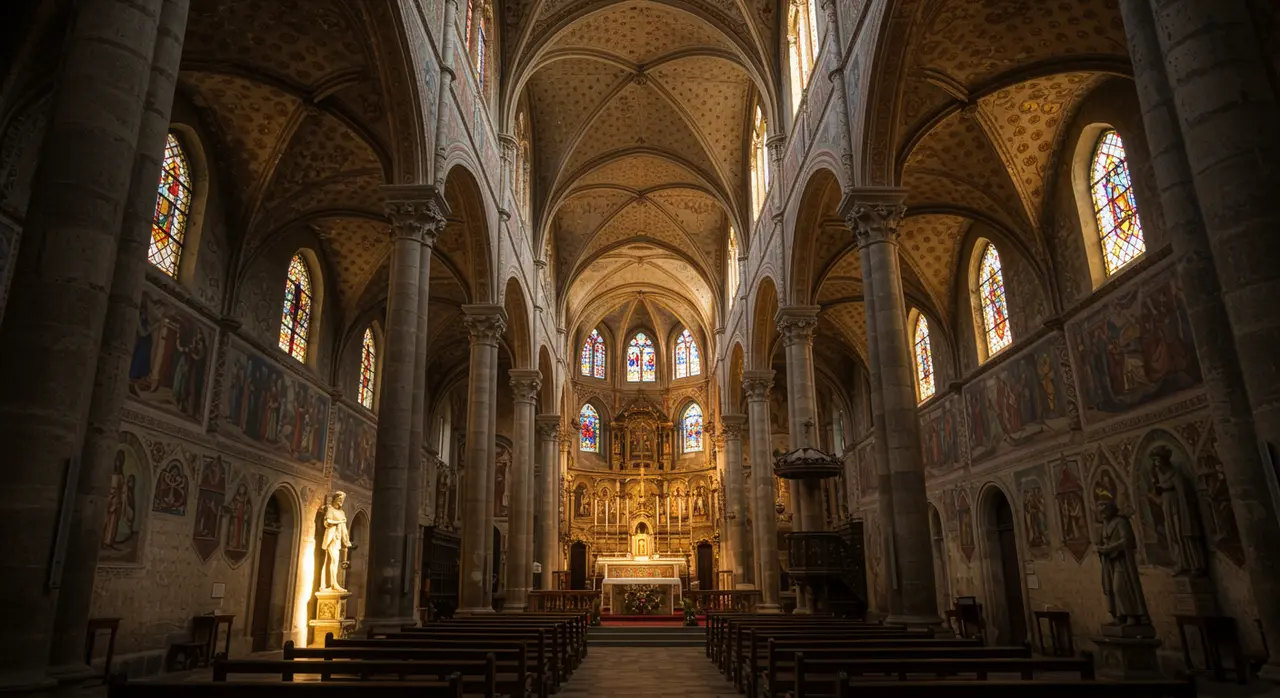Toledo Church Honors Blessed Carlo Acutis, Patron Saint of the Digital Age
49 views
Inside the hallowed walls of a century-old church in Toledo, Ohio, a statue stands as both a tribute and a revelation. It is not the solemn figure of a martyr or the austere likeness of a medieval saint, but rather a youthful depiction of Blessed Carlo Acutis, an Italian teenager whose short life has become a beacon for modern faith. The statue, adorned with contemporary symbols—a laptop, a rosary, a soccer ball, a camera, and even his beloved pet dog—captures the essence of a young man who blended the sacred and the secular with effortless grace. As the world anticipates his canonization on April 27, Blessed Carlo’s story continues to inspire countless hearts, illustrating that holiness is not confined to cloisters or cathedrals but can flourish amidst the rhythms of everyday life.
Blessed Carlo Acutis: A Saint for the Digital Age
Born in London to Italian parents, Carlo Acutis lived a life that was as ordinary as it was extraordinary. He attended school, played soccer, loved animals, and enjoyed tinkering with computers—a passion that would later define his unique approach to faith. Diagnosed with leukemia at the tender age of 15, Carlo’s earthly journey ended in 2006, but his legacy has since transcended borders and generations. What sets him apart, and perhaps makes him uniquely suited to be a saint for the modern era, is his ability to integrate technology into his spiritual mission.

Carlo's fascination with computers was not merely recreational; it became a tool for evangelization. He created an online catalog of Eucharistic miracles, compiling accounts from across the globe to make them accessible to anyone with an internet connection. This digital endeavor, undertaken by a boy not yet old enough to drive, reflects a profound understanding of the potential of technology—not as a distraction, but as a vessel for divine truth. His work continues to resonate deeply with individuals like Daniel Francis and Miguel Garcia, tech enthusiasts who see Carlo as a role model for using digital platforms to spread messages of hope and faith.
In Toledo, young people like Cristian Parga have taken Carlo’s example to heart. Inspired by his kindness and devotion, Parga and his classmates designed and fundraised for the statue that now graces their church. The project is more than an artistic tribute; it is a testament to Carlo’s ability to ignite a sense of purpose in others. For these students, Carlo is not merely a figure from history; he is a friend, a guide, and a reminder that sanctity is within reach, even amidst the complexities of modern life.
The Universality of Holiness
Blessed Carlo’s appeal lies in his relatability. Unlike many saints whose lives seem distant and cloaked in mysticism, Carlo’s story is refreshingly human. He loved soccer, took photographs, and had a pet dog. These details, though seemingly trivial, make him accessible to people of all ages and walks of life. Santiago Ramirez Villa, a young missionary, finds inspiration in Carlo’s virtues, striving to emulate his humility and generosity in his own work.
Even beyond the realm of youth, Carlo’s intercession has touched lives in profound ways. Caroline Prickel, for instance, credits him with guiding her on her journey to motherhood. After struggling with doubt and uncertainty, she found solace in the reassurance offered by Carlo’s mother and the relics associated with his life. Naming her son Charles in his honor, Caroline’s story is a poignant reminder of the far-reaching impact of Carlo’s legacy—a legacy that bridges the gap between the sacred and the secular, offering hope to those navigating the challenges of modern existence.
As the date of his canonization approaches, Carlo Acutis is increasingly seen as a bridge to sanctity in a world often perceived as too fast-paced, too fragmented, or too secular for faith to take root. His life challenges this notion, proving that holiness is not confined to monasteries or mission fields but can thrive in the heart of a teenager navigating the digital age. For tech-driven communities, Carlo serves as a reminder that technology, often criticized for its isolating effects, can also be a powerful tool for connection and evangelization.
A Reflection on Modern Sanctity
The canonization of Blessed Carlo Acutis is not merely a recognition of his individual merits; it is a broader affirmation that sanctity is accessible to all. In an age where many feel disconnected from traditional expressions of faith, Carlo’s life offers a compelling alternative. His story speaks to the possibility of blending devotion with daily life, of finding the divine in the ordinary, and of using modern tools to amplify eternal truths.
Carlo’s legacy challenges us to reconsider our own lives. Are we, like him, using our talents and passions to serve a greater purpose? Are we finding ways to integrate our faith into the fabric of our daily routines? In a world often divided by generational and cultural gaps, Carlo’s example transcends these barriers, uniting people in their shared longing for meaning and connection.
As the church prepares to canonize this remarkable young man, his statue in Toledo stands as a fitting symbol of his impact—a reminder that holiness is not an abstract ideal but a tangible reality, one that can be lived out in classrooms, soccer fields, and even cyberspace. Blessed Carlo Acutis invites us all to see sanctity not as a distant goal but as an attainable journey, one that begins with a simple act of kindness, a moment of prayer, or a click of a mouse. Through his life and legacy, he shows us that the path to holiness is not reserved for the few but is open to all who dare to walk it.